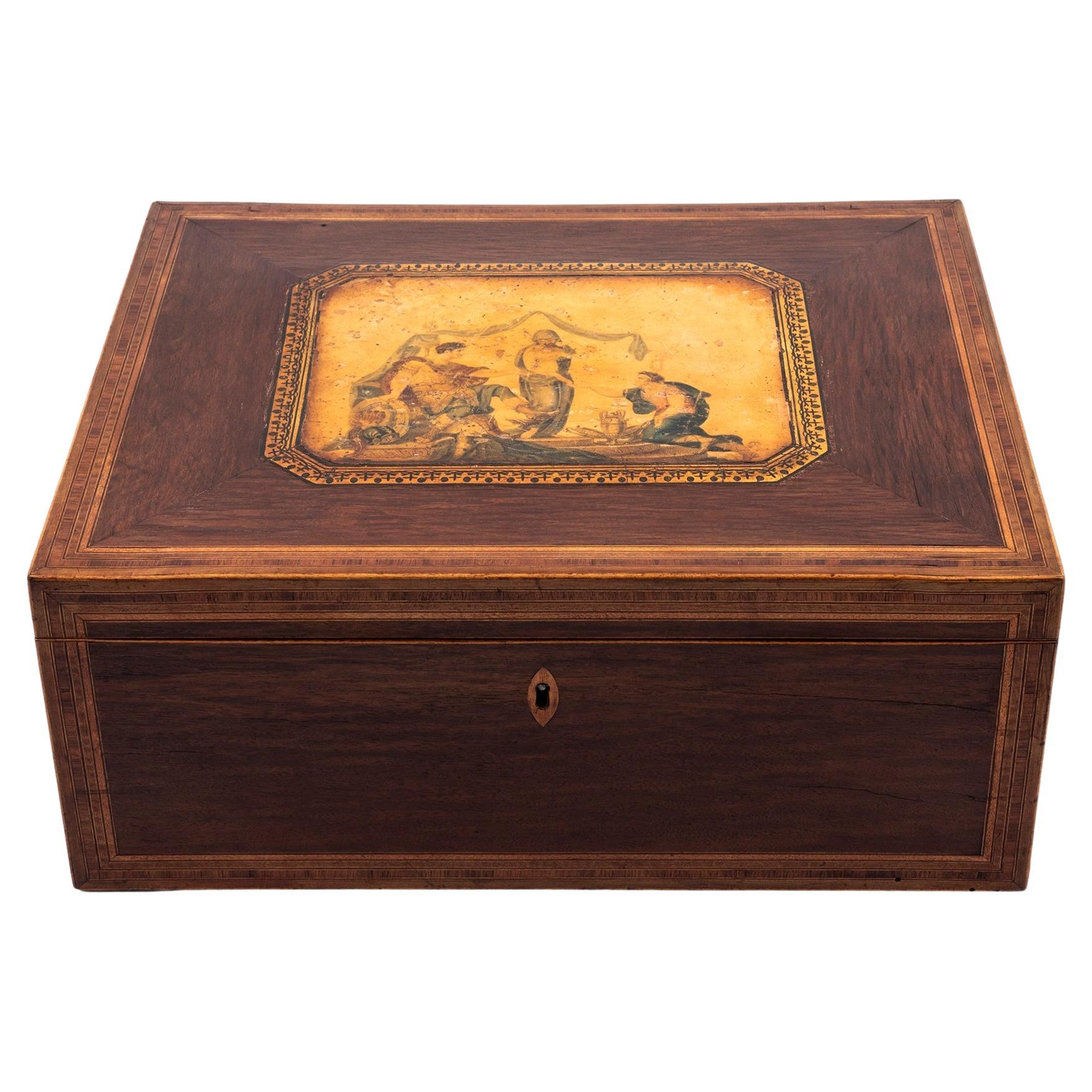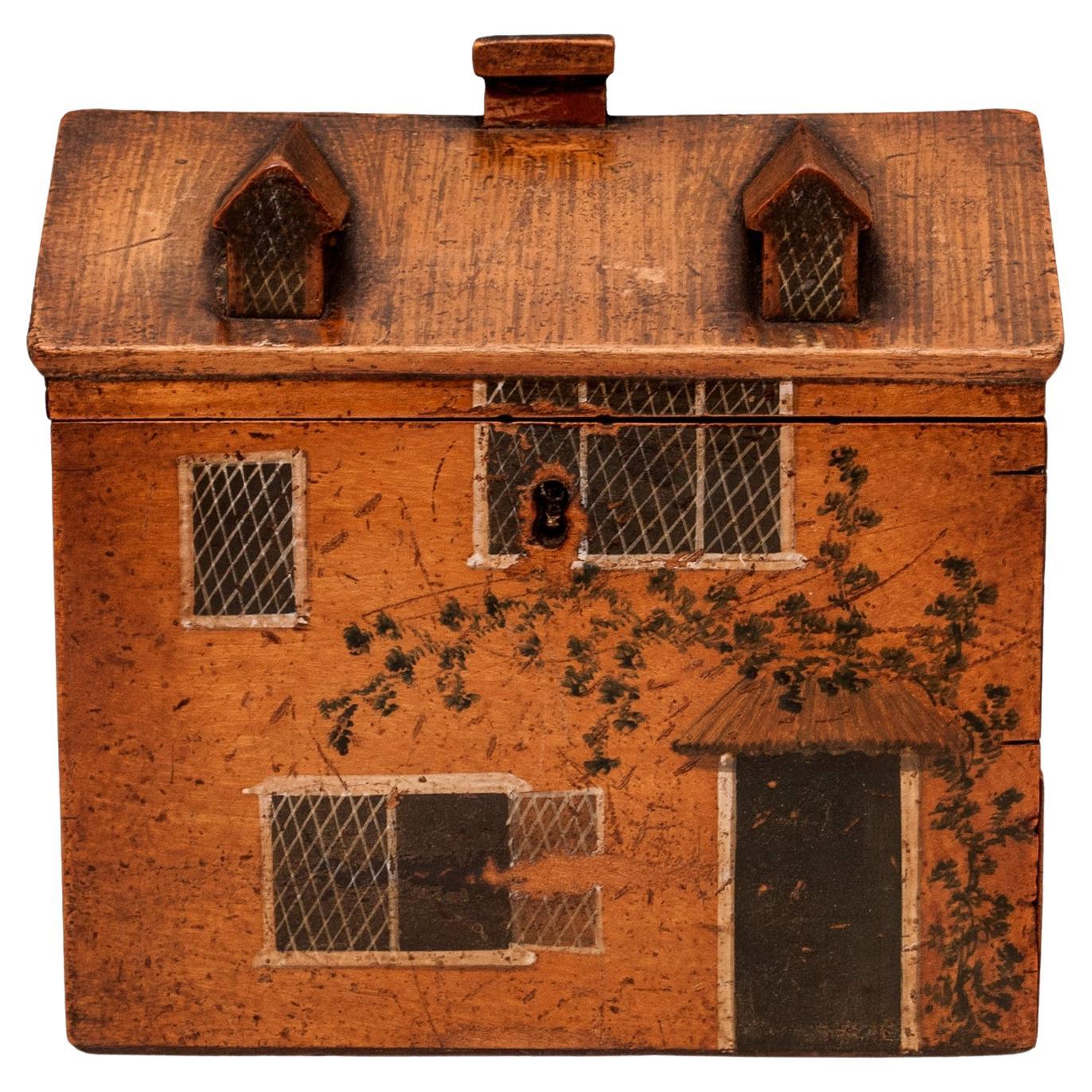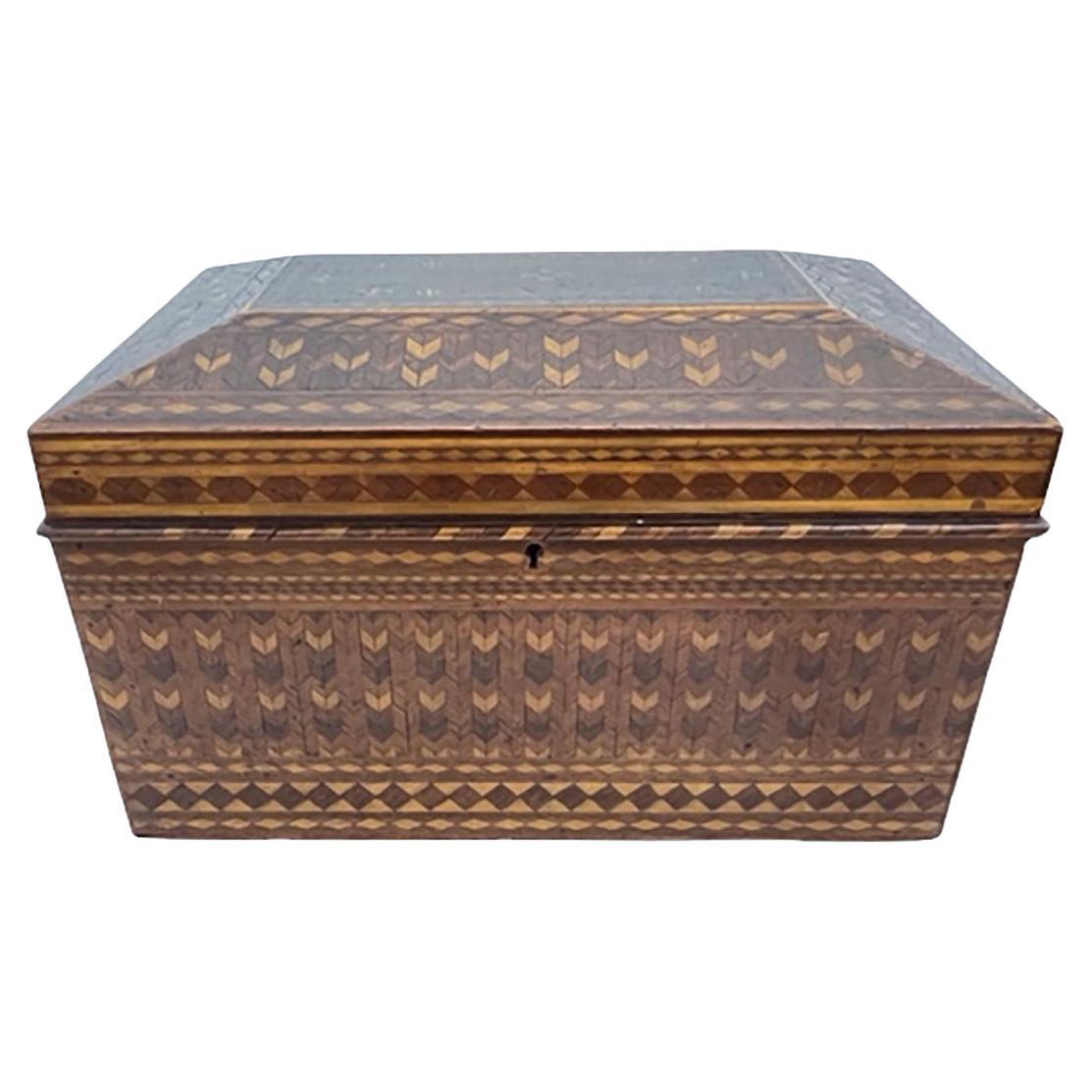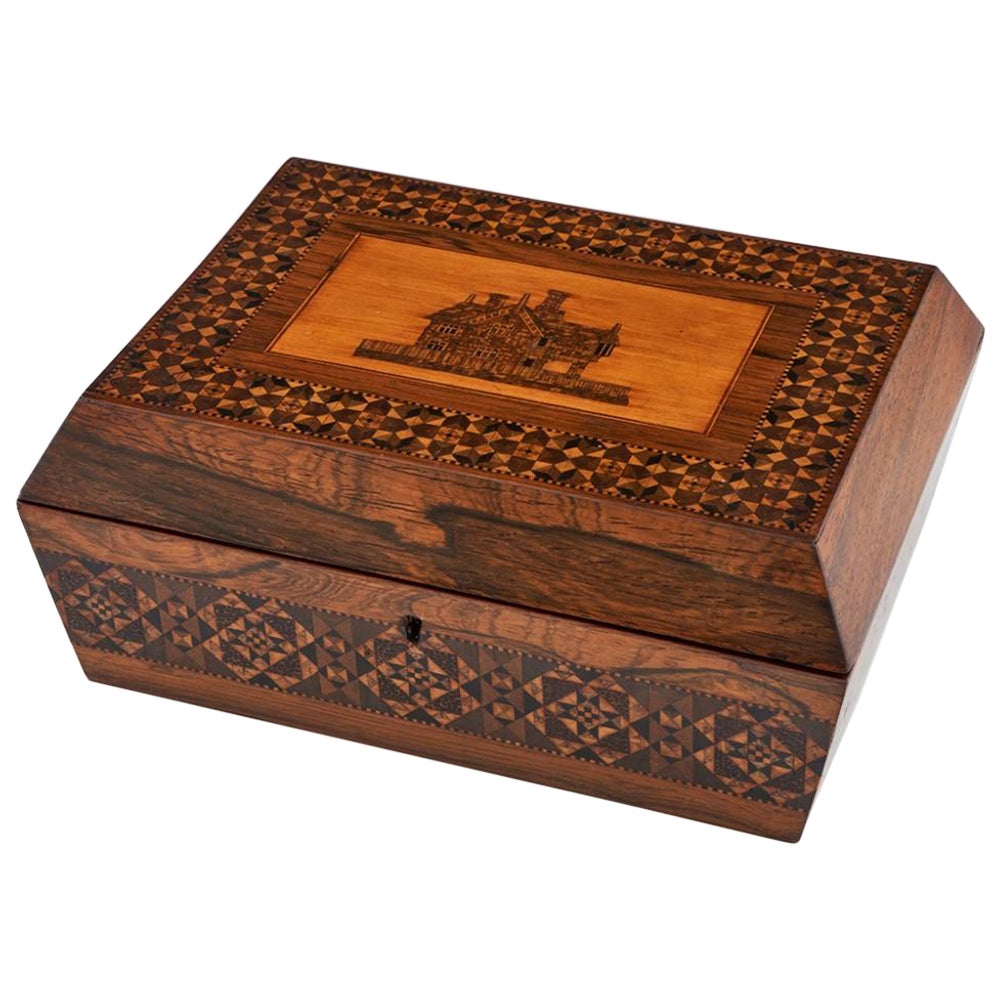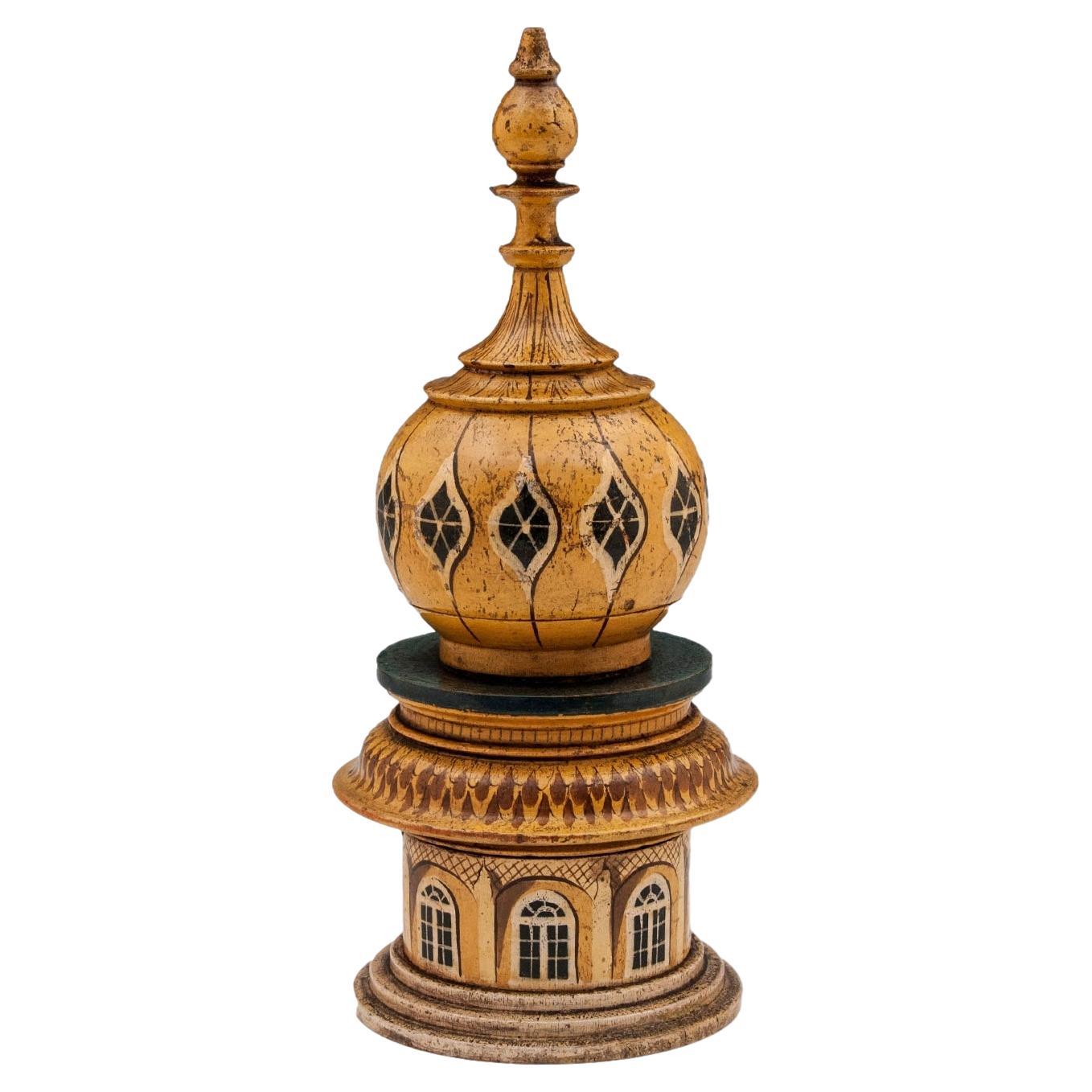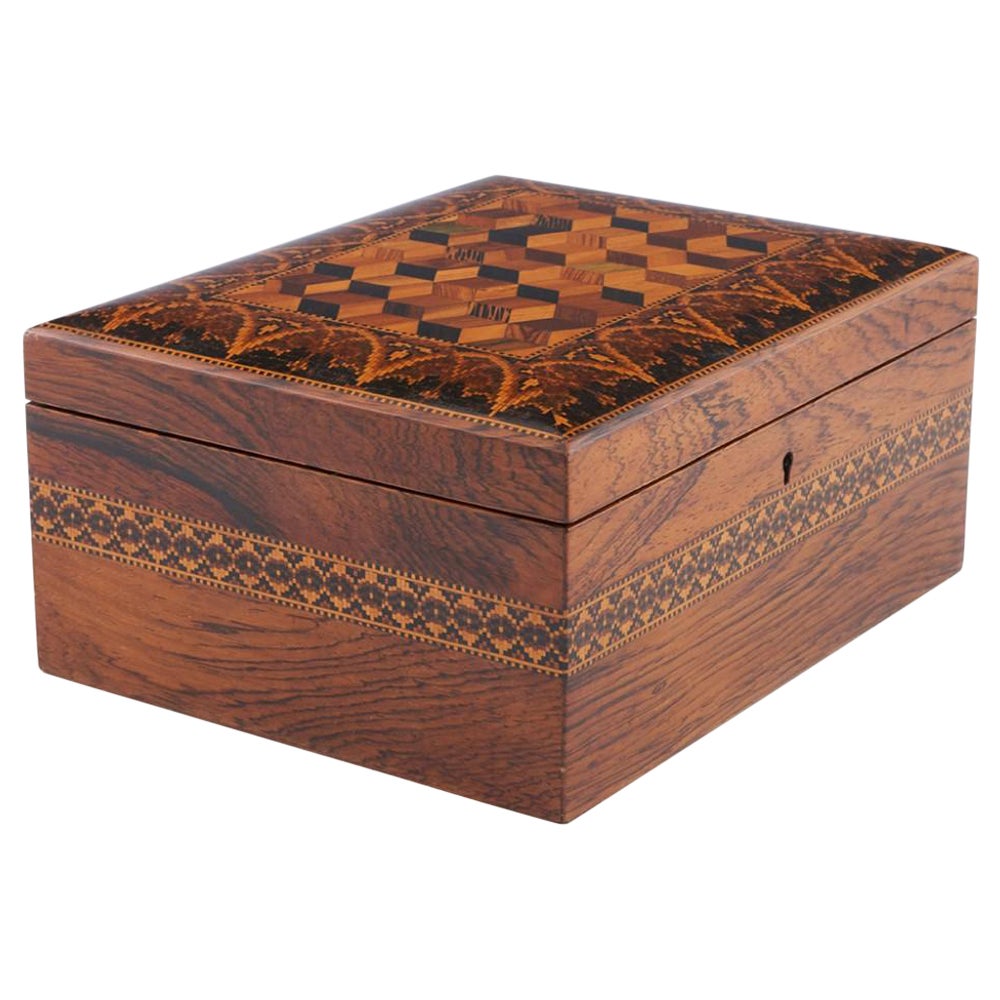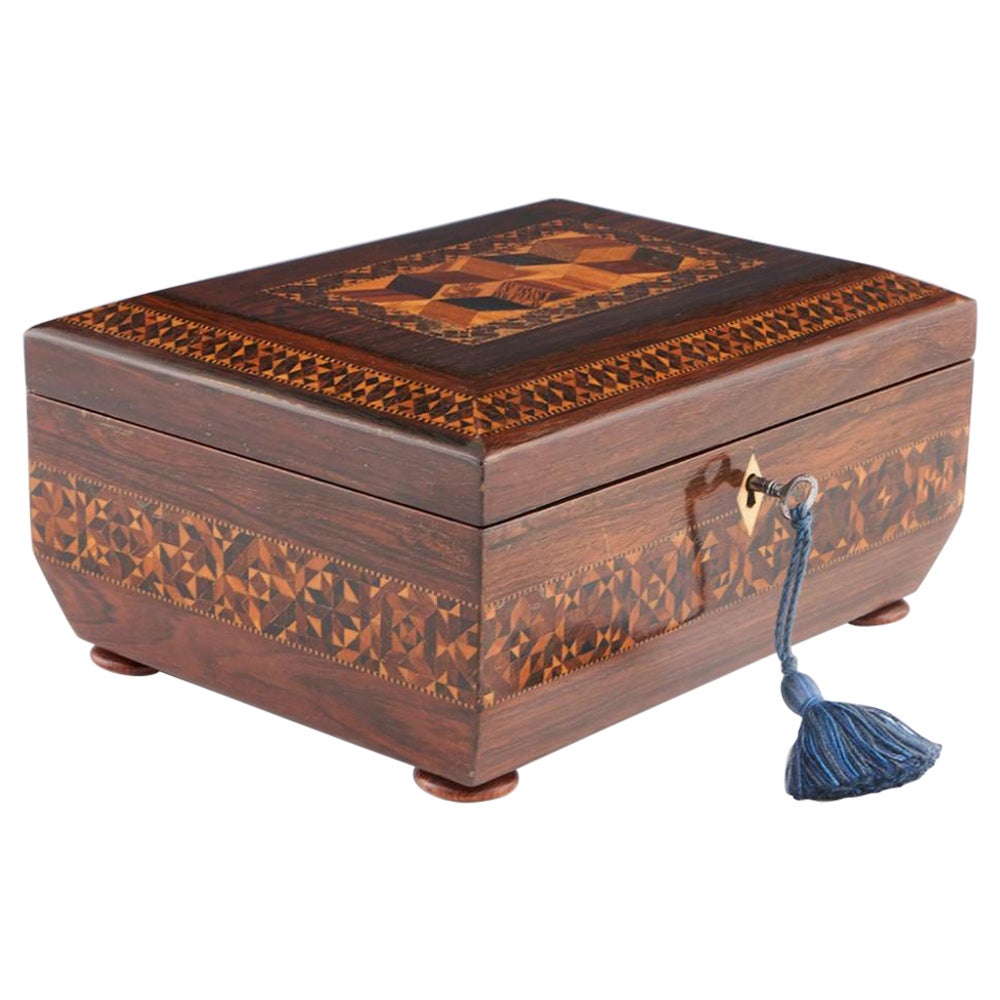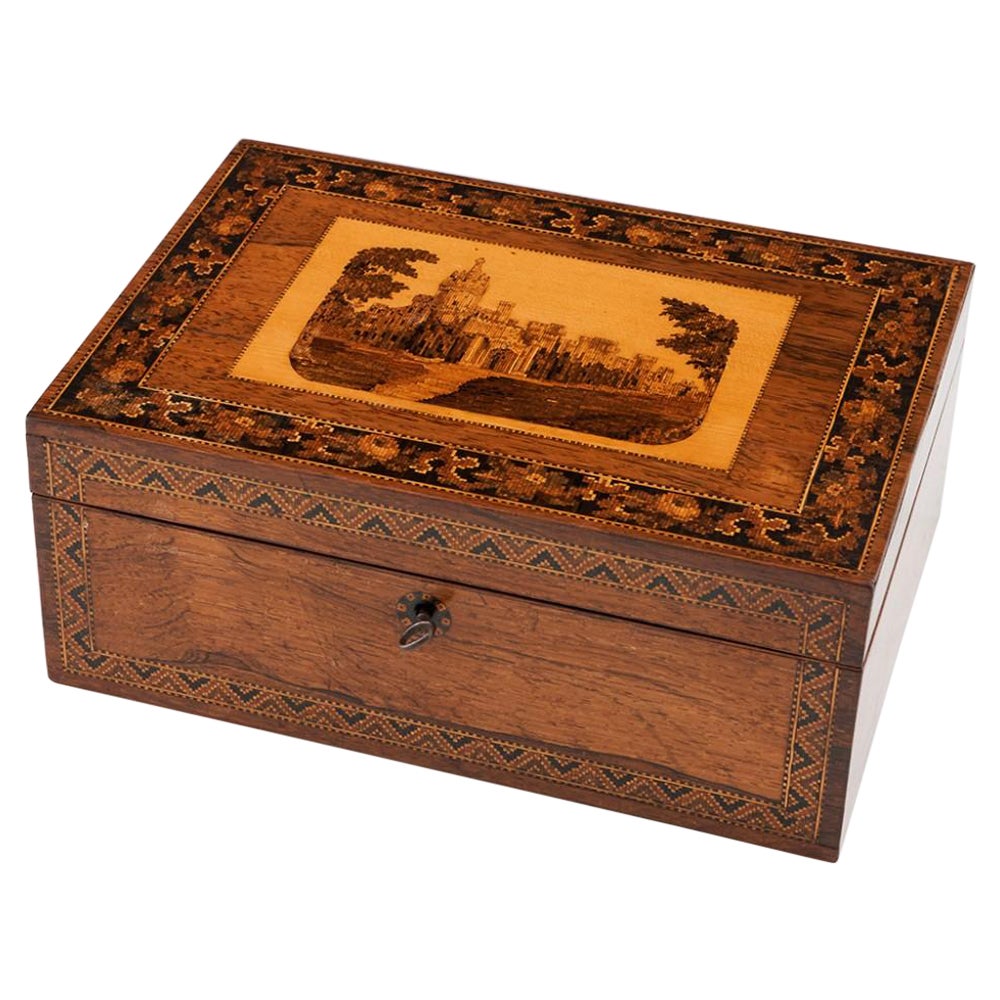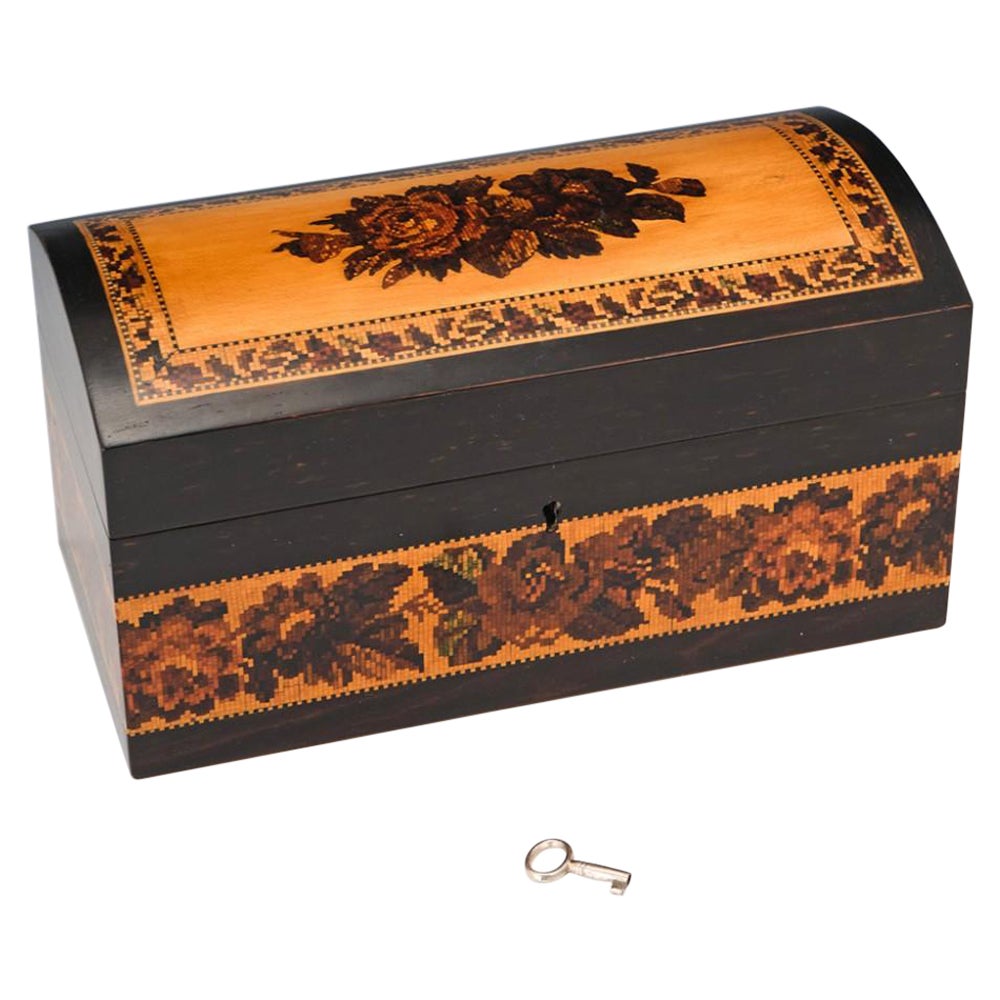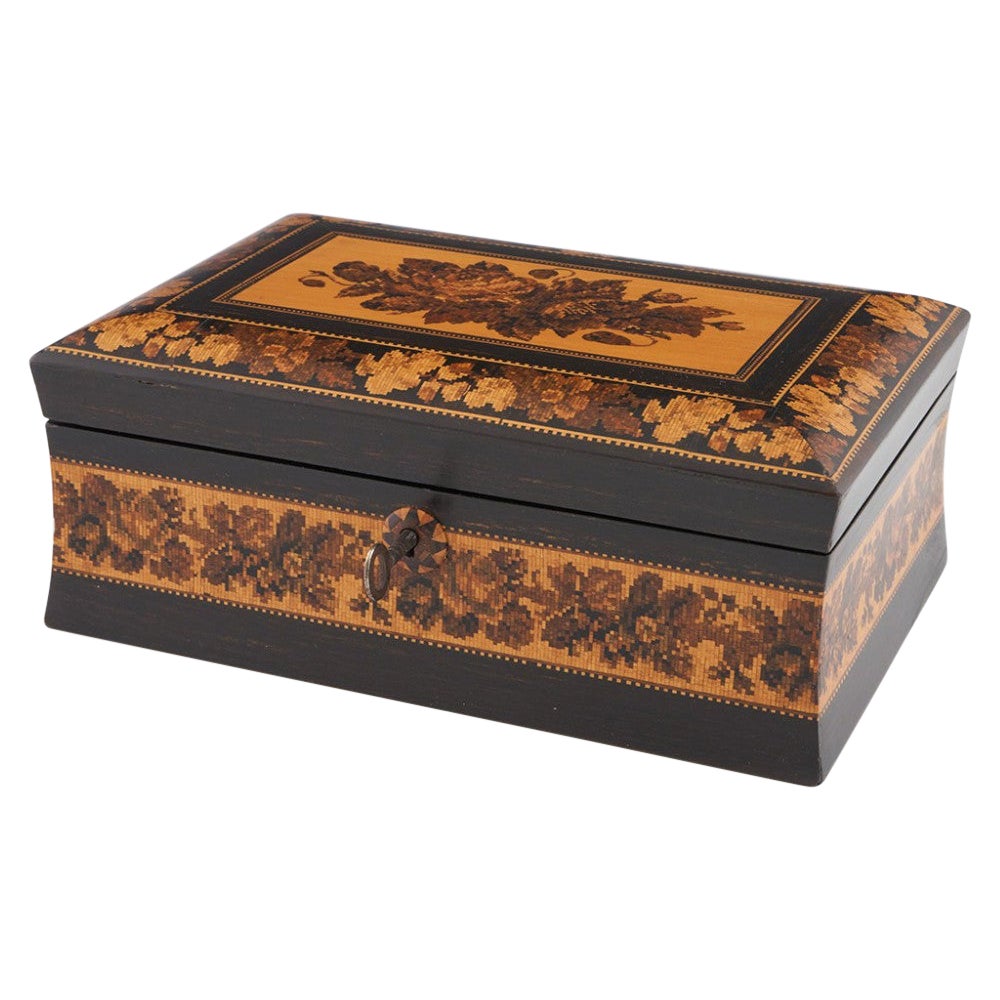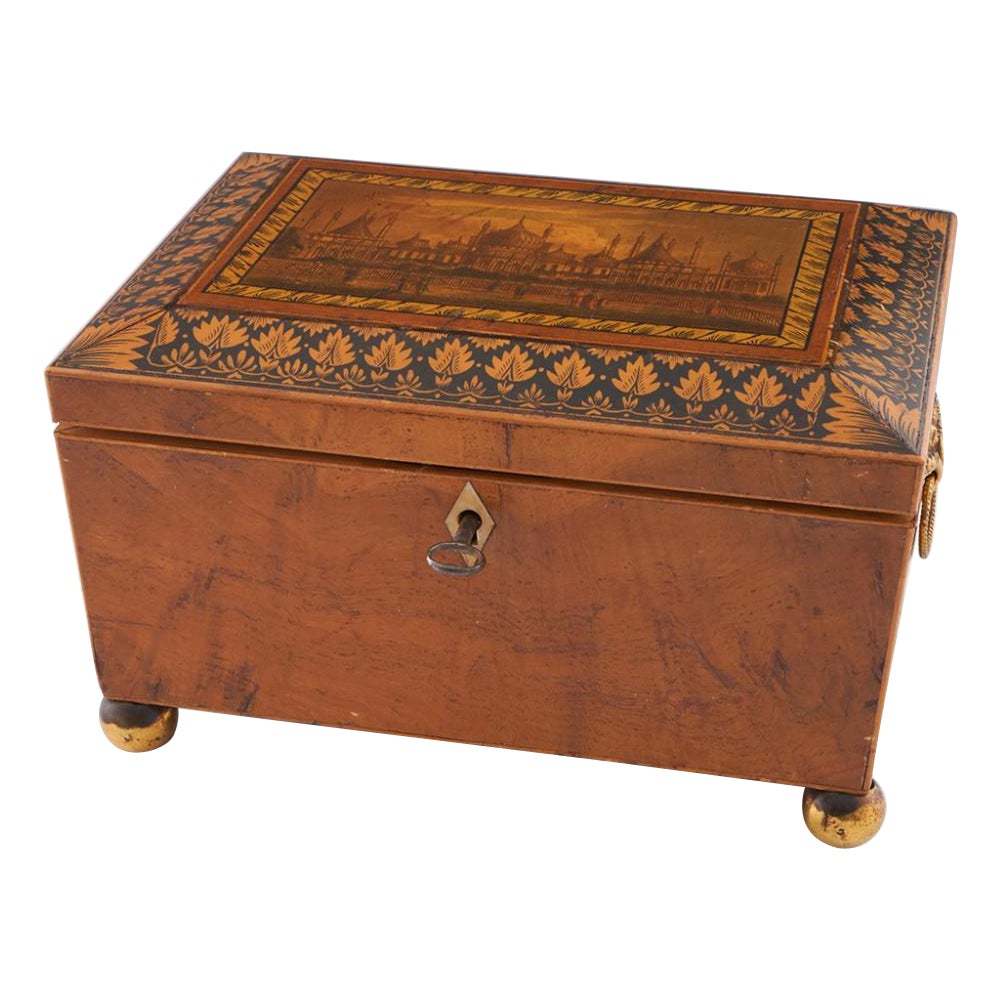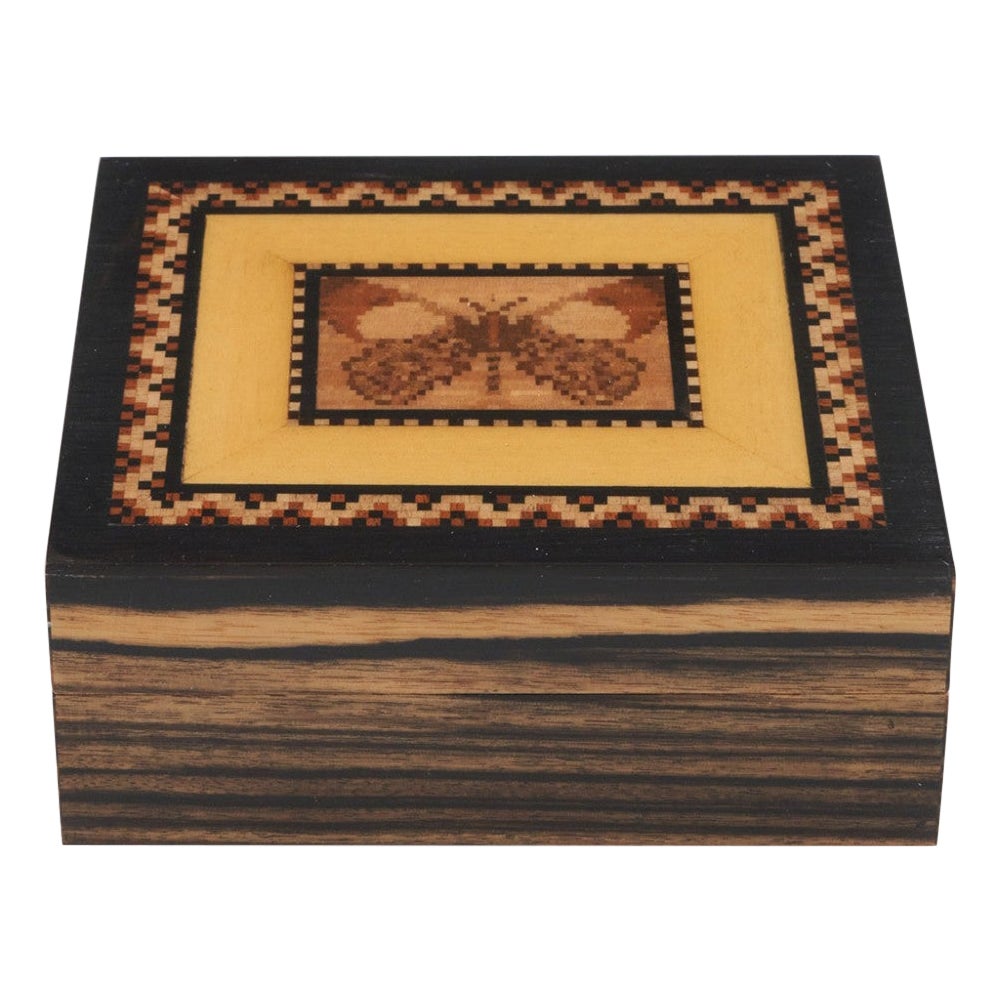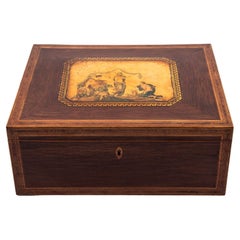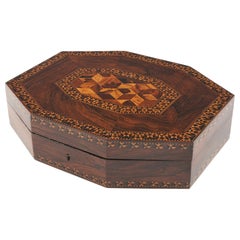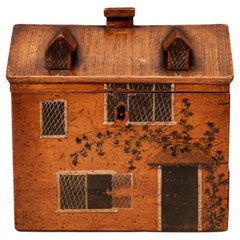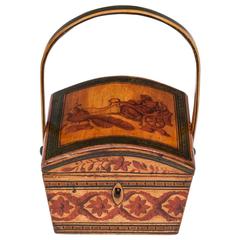
Tunbridge Ware Sewing Box
View Similar Items
1 of 7
Tunbridge Ware Sewing Box
About the Item
- Dimensions:Height: 7 in (17.78 cm)Width: 5 in (12.7 cm)Depth: 5 in (12.7 cm)
- Place of Origin:
- Period:
- Date of Manufacture:1815
- Condition:
- Seller Location:Northampton, GB
- Reference Number:1stDibs: LU97044333063
You May Also Like
- Regency Tunbridge Ware Sewing BoxBy Tunbridge WareLocated in Northampton, GBFitted Interior & Silver Handles From our Tunbridge Ware collection, we are delighted to offer this Tunbridge Ware Sewing Box. The Sewing Bo...Category
Antique Early 19th Century British Regency Decorative Boxes
MaterialsSatinwood
- Tunbridge Ware Sewing Box c1840By Tunbridge WareLocated in Tunbridge Wells, GBHeading : Tunbridge ware sewing box Date : c1840 Period : Victoria Origin : Tunbridge Wells, Kent Decoration : Central perspective cube patte...Category
Antique 1840s British Victorian Decorative Boxes
MaterialsWood
- Georgian Tunbridge Ware Folk Art Cottage Sewing BoxBy Tunbridge WareLocated in Northampton, GBTunbridge Ware Folk House Sewing Box From our Sewing Box collection, we are thrilled to offer this Novelty Folk Art Cottage Sewing Box. The box of rectangular form made from Sycamor...Category
Antique Early 1800s British Georgian Decorative Boxes
MaterialsWood, Sycamore
- Tunbridge Ware BoxLocated in Dallas, TXLarge Tunbridge ware box with herringbone pattern inlaid parquetry. Circa 1840, England.Category
Antique 1840s English Decorative Boxes
MaterialsWood
$1,250 - Tunbridge Ware - A Very Finely Decorated Sewing Box, c1840Located in Tunbridge Wells, GBTunbridge Ware - A Very Finely Decorated Sewing Box with 'Hurst Wood Cottage' Mosaic, c1840 Additional Information: Heading: Tunbridge Ware - A Very Finely Decorated Sewing Box with...Category
Antique 19th Century English Victorian Decorative Boxes
MaterialsPaper
- Brighton Pavilion Tunbridge Ware Sewing CompendiumBy Tunbridge WareLocated in Northampton, GBRare Tunbridge Ware Form Sewing Compendium From our Tunbridge Ware collection, we are delighted to offer this very rare Tunbridge Wear Sewing Compendium. The Sewing Compendium modelled as a tower from the Brighton Pavilion features the iconic minaret turned in Sycamore (aka white wood) and a large globular body with hand-painted details leading to further turned faces and the hand-painted windows upon a stepped base. The Sewing Compendium opens in two locations one just below the first dome revealing a pin cushion and the second just above the windows revealing the Sewing tools including a Tunbridge Ware thimble and bobbin. The Tunbridge Ware Sewing Compendium dates to the Georgian era during the reign of George IV circa 1825. Brighton Pavilion, The Royal Pavilion and surrounding gardens are a Grade I listed property and were the former Royal residence located in Brighton, England. It was built in 1787 in three stages as a seaside retreat for George, Prince of Wales who became the Prince Regent in 1811 and then King George IV in 1820. It is built in the Indo-Saracenic style prevalent in India for most of the 19th century. The current appearance of the Pavilion which has various domes and minarets, is the work of architect John Nash, who extended the building starting in 1815. George IV's successors William IV and Victoria also used the Pavilion but Queen Victoria decided that Osborne House should replace the Pavilion as the royal seaside retreat and therefore the Pavilion was sold to the city of Brighton in 1850. Indo-Sarascenic refers to a cross between Indian architecture and Muslim architecture. Minarets means beacon in Arabic. In Islamic religious architecture, the tower from which the faithful are called to prayer five times each day by a muezzin, or crier. Such a tower is connected to a mosque and has one or more balconies or open galleries. The inspiration for the minarets features on the Brighton Pavilion are in homage to these types of finials. John Nash (1752-1835) was one of the most prevalent British architects from the Georgian and Regency periods. He was responsible for the design, in the neoclassical and picturesque styles of many important areas of London. He was financed by the Prince Regent and by the era's most successful property developer, James Burton. Nash's most famous designs were the Brighton Pavilion, Marble Arch and Buckingham Palace. Sycamore is a member of the Maple family, found in Europe. It is light yellow in colour and is often a very clean wood, with a straight, fine grain. The wood is often pippy. However, these pips are usually a very similar colour to the rest of the wood making them hardly visible. Georgian, a period in British history dating from 1714-1837, the Georgian era after the Hanoverian kings George I, George II, George III and George IV. Tunbridge Ware Tunbridge Wells and Tunbridge in Kent, England became popular in the 17th Century for their therapeutic waters. By the 18th century, Tunbridge Wells was a hugely popular Spa resort. Shops and stalls were set up to sell local work of distinction to visitors as souvenirs. Many of the original boxes were decorated with all sorts of different kinds of designs. Many of the Tunbridge boxes...Category
Antique Early 19th Century British George IV Decorative Boxes
MaterialsWood, Sycamore
